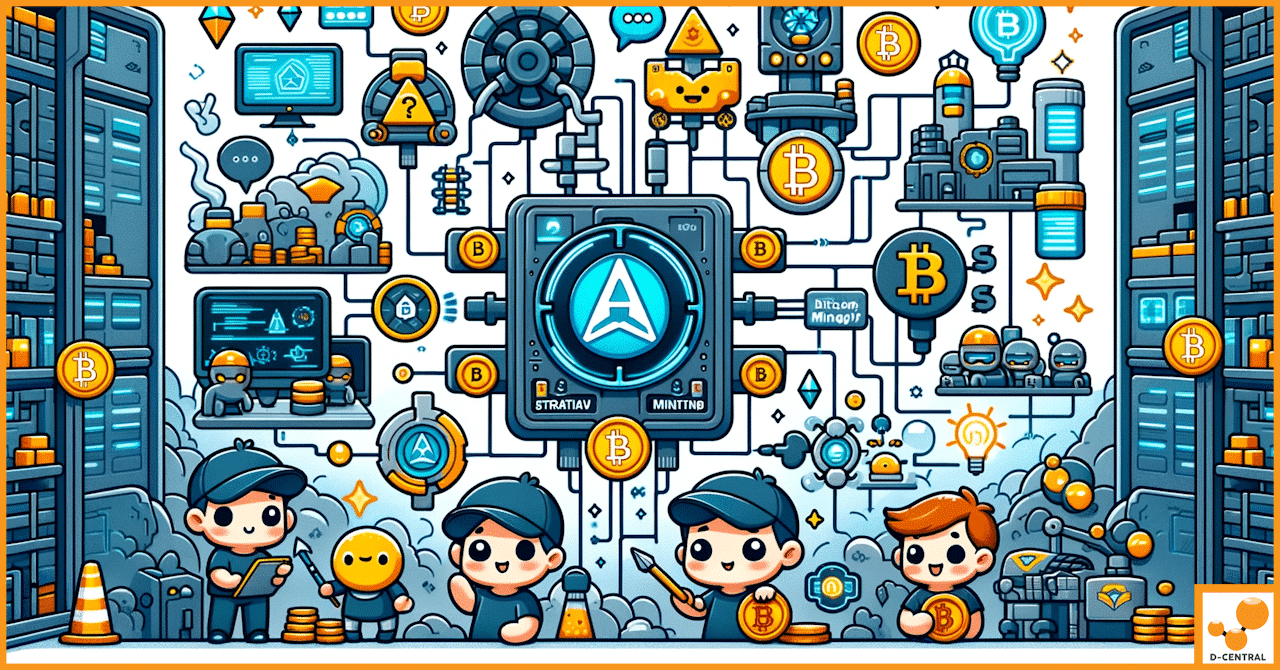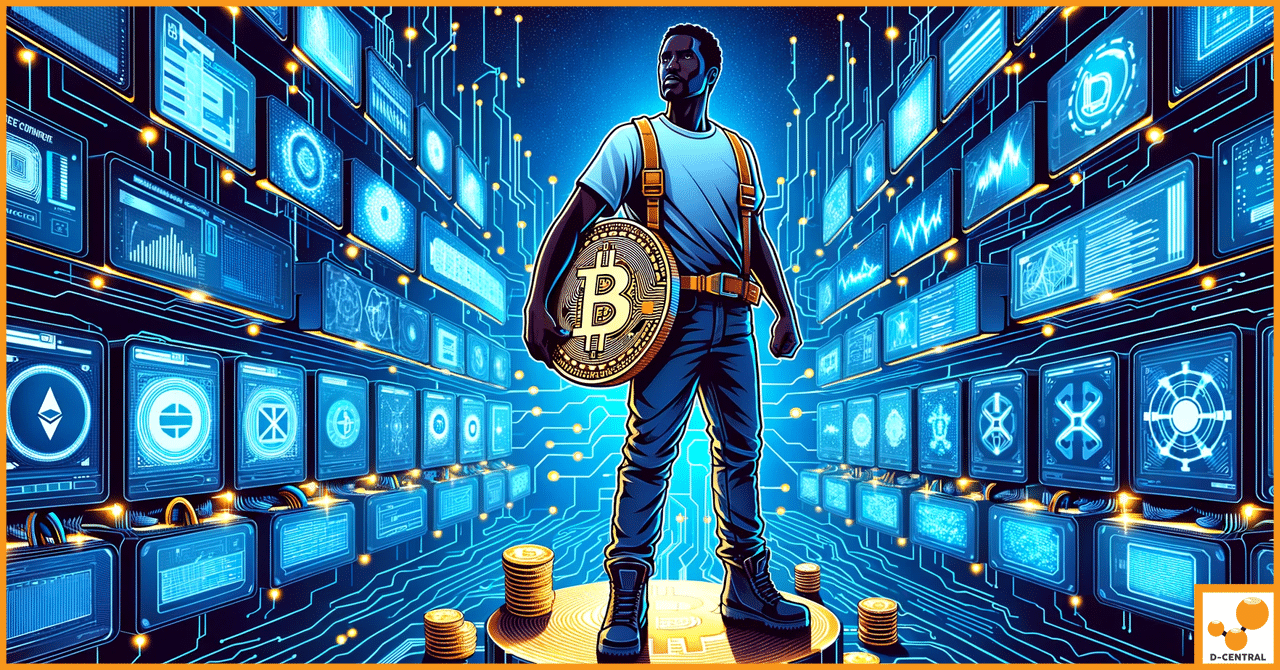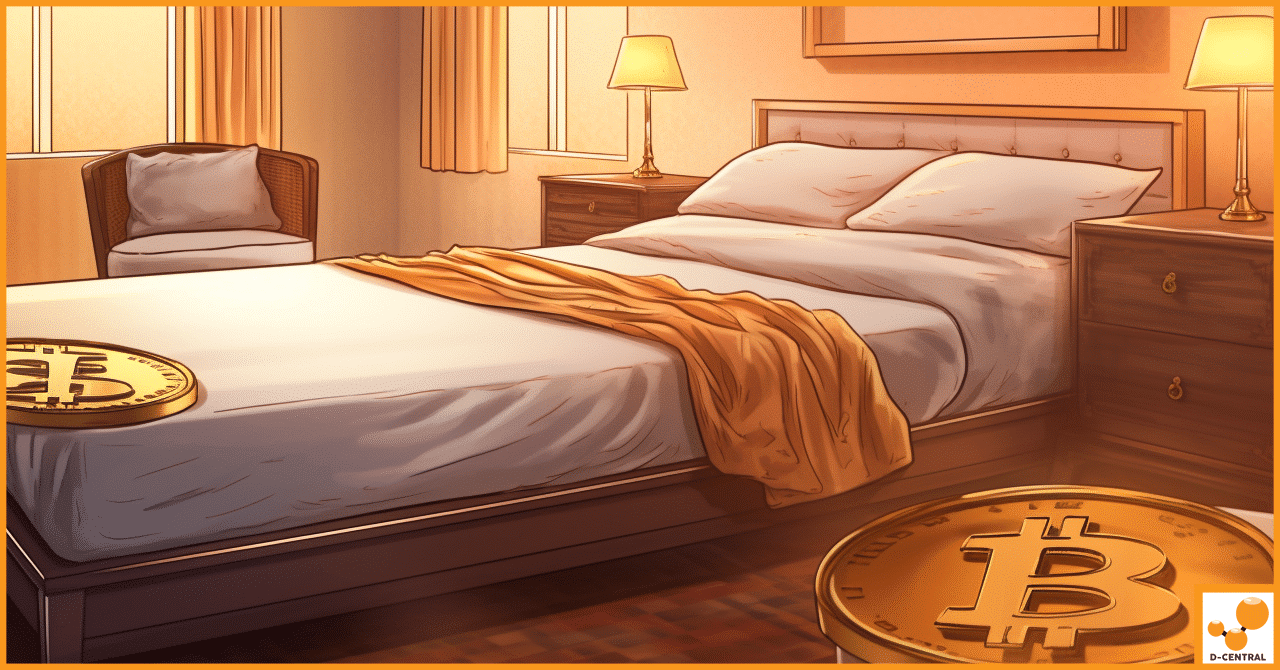
Stratum V2: A Comprehensive Guide to the Bitcoin Mining Protocol
Bitcoin mining, the backbone of the world’s premier cryptocurrency, has undergone a remarkable evolution since its inception. In the early
4479 Desserte Nord Autoroute 440, Laval, QC H7P 6E2

Welcome to the fascinating world where the realms of gaming and cryptocurrency converge. At the forefront of this innovative crossroads stands D-Central Technologies, a trailblazer and a revered authority in the Bitcoin mining industry. As the largest ASIC repair center in Canada and a trusted name in the realm of cryptocurrency, D-Central Technologies has been instrumental in shaping the landscape of digital currency mining. Our expertise spans across a spectrum of services including ASIC repairs, hosting mining operations, and providing comprehensive mining support.
In this exploration, we delve into a captivating concept: the integration of Bitcoin mining within the virtual universe of Minecraft. This globally popular game, renowned for its open-ended creativity and building mechanics, presents an intriguing platform for intertwining the complex world of cryptocurrency. The idea of ‘mining’ in Minecraft, a core gameplay element, takes on a novel twist when imagined alongside the real-world process of Bitcoin mining.
The relevance of this topic extends beyond mere novelty or entertainment. For gamers, it opens a portal to understanding and engaging with the principles of cryptocurrency, a domain that is increasingly becoming integral to our digital lives. For cryptocurrency enthusiasts and professionals, it represents an innovative approach to education and engagement, bridging the gap between complex technological concepts and a widely accessible gaming platform.
As we embark on this journey, we invite you to explore with us the possibilities, challenges, and implications of merging the dynamic world of Bitcoin mining with the creative expanse of Minecraft. Stay tuned as we uncover the potential of this unique fusion, brought to you by the expertise and vision of D-Central Technologies.
Bitcoin mining forms the backbone of the cryptocurrency world, a process as crucial as it is complex. At D-Central Technologies, where we specialize in all things Bitcoin, we understand mining as the computational process that underpins the Bitcoin network. It involves validators, known as miners, using powerful ASIC hardware to solve intricate cryptographic puzzles. The reward for this intensive computational effort is Bitcoin, a digital currency that has revolutionized our understanding of money. This mining process not only generates new bitcoins but also plays a critical role in maintaining and securing the Bitcoin blockchain, a decentralized ledger of all transactions.
In the virtual world of Minecraft, ‘mining’ assumes a different, yet somewhat parallel meaning. It is a fundamental activity where players dig and excavate blocks to gather resources, ranging from simple coal to precious diamonds. This mechanic of resource extraction and exploration in Minecraft mirrors the real-world concept of Bitcoin mining in several ways. Just as miners in Minecraft explore and dig deep into the game’s landscapes for resources, Bitcoin miners delve into computational work to ‘unearth’ new bitcoins. Both processes require effort, strategy, and sometimes sophisticated tools – pickaxes in Minecraft and ASIC hardware in Bitcoin mining.
The idea of integrating Bitcoin rewards into Minecraft gameplay is both fascinating and complex. Theoretically, this integration could transform in-game achievements and resources into real-world value, blurring the lines between virtual gaming economies and actual financial systems. For example, completing certain tasks or successfully mining in-game resources could yield small amounts of Bitcoin as a reward, introducing a real-world incentive to the gaming experience. This concept not only adds an element of financial education and investment into gaming but also offers a novel approach to understanding cryptocurrencies.
However, the feasibility of such integration faces several challenges. The primary concern revolves around the technical and ethical implications of blending real-world financial rewards with gaming. This would require a secure and transparent system within Minecraft that aligns with the game’s policies and the broader regulatory framework governing cryptocurrencies. Furthermore, balancing the gaming experience so that it remains enjoyable and fair, while introducing a cryptocurrency reward system, would be crucial to ensure that the game’s essence is preserved.
In summary, while the concept of integrating Bitcoin mining with Minecraft presents an intriguing theoretical possibility, its practical implementation would require careful consideration of various technical, ethical, and regulatory factors. As experts in the field of Bitcoin mining, D-Central Technologies remains at the forefront of exploring and understanding these innovative intersections between technology, gaming, and finance.
In the fascinating landscape where technology meets entertainment, two distinct yet conceptually similar forms of mining emerge: Real-World Bitcoin Mining and In-Game Earning in Minecraft. At D-Central Technologies, we have established ourselves as experts in the former, while the latter remains a burgeoning concept that captures the imagination of gamers and tech enthusiasts alike.
Real-World Bitcoin Mining
Real-world Bitcoin mining is a tangible, intensive process that is central to the functioning and security of the Bitcoin network. This process involves solving complex mathematical problems using specialized hardware known as ASIC (Application-Specific Integrated Circuit) miners. These machines are designed to efficiently perform the calculations necessary to maintain the blockchain, a decentralized ledger that records all Bitcoin transactions. Successful miners are rewarded with new bitcoins, incentivizing them to contribute their computational power to the network.
D-Central Technologies excels in this arena. We provide a comprehensive suite of services that cater to every aspect of Bitcoin mining. Our expertise extends from repairing and maintaining ASIC miners to hosting large-scale mining operations. We understand the nuances of mining efficiency, from power consumption to hardware optimization, and offer tailored solutions to maximize profitability for our clients, whether they are seasoned miners or newcomers to the field.
In-Game Earning in Minecraft
In contrast, in-game earning in Minecraft, particularly in the context of Bitcoin, is a hypothetical concept that merges the virtual and the real. In this scenario, players would engage in the familiar activity of mining within the game, but with a twist: their in-game achievements could potentially translate into real-world Bitcoin rewards. This concept envisions a unique blend of gaming and financial incentives, where virtual resource gathering is linked to cryptocurrency earnings.
However, it’s important to note the differences between these two forms of mining. In real-world Bitcoin mining, the rewards are a direct result of contributing to the blockchain’s security and transaction verification process. It’s a process that requires significant investment in hardware, energy, and expertise. In contrast, in-game earning in Minecraft would be more akin to a reward system or a gamified approach to cryptocurrency education and acquisition.
While the idea of merging Minecraft with Bitcoin mining is intriguing, it significantly differs from the real-world complexities and contributions of actual Bitcoin mining. The former would be a novel way to engage with cryptocurrency, perhaps more accessible but less impactful in terms of contributing to the Bitcoin network.
While both real-world Bitcoin mining and hypothetical in-game earning in Minecraft revolve around the concept of mining, they operate on fundamentally different scales and with distinct purposes. At D-Central Technologies, our focus and expertise lie in the real-world domain, where we continue to support and enhance the Bitcoin mining community with our range of specialized services and solutions.
The integration of cryptocurrency into gaming platforms like Minecraft represents a novel intersection of two rapidly evolving digital realms. This fusion has the potential to redefine the gaming experience, offering new forms of value and interaction within virtual worlds. As a leader in the Bitcoin mining industry, D-Central Technologies is keenly interested in these developments, recognizing their potential impact on both the gaming community and the broader cryptocurrency ecosystem.
Integrating Cryptocurrency into Gaming Platforms
The integration of cryptocurrency into games like Minecraft could take various forms, from in-game currencies that have real-world value to reward systems where players earn cryptocurrency for achieving certain milestones or completing specific tasks. This digital convergence offers a unique opportunity for players to engage with the principles of cryptocurrency in an interactive and immersive environment. It also opens up avenues for developers to create more dynamic and economically viable gaming ecosystems.
The technical implementation of such integration would require robust and secure systems to handle transactions and prevent fraud. This is where blockchain technology, the foundation of cryptocurrencies like Bitcoin, becomes vital. By leveraging blockchain, gaming platforms can ensure transparent and secure transactions, enhancing the overall trust and integrity of the gaming experience.
Previous Attempts and Examples in Gaming
There have been several pioneering attempts to incorporate cryptocurrency rewards into gaming. One notable example is the game “Spells of Genesis,” which combined a traditional mobile gaming experience with an integrated blockchain economy. Players could collect and trade digital assets that had real-world value, pioneering the concept of ‘play-to-earn’.
Another example is the game “Axie Infinity,” which operates on a similar model, allowing players to earn cryptocurrency through gameplay. These digital assets, or ‘Axies’, are tradable on Ethereum’s blockchain, providing a tangible value to the player’s gaming achievements.
In the context of Minecraft, the concept of cryptocurrency integration is still largely theoretical, but there have been community-driven initiatives and mods that attempt to bridge Minecraft with elements of cryptocurrency. For instance, servers like “BitQuest” or “SatoshiQuest” have experimented with in-game economies based on Bitcoin, where players can earn or trade Bitcoin through their in-game activities.
The intersection of cryptocurrency and gaming is a frontier of immense potential, blending entertainment with real-world economic value. While the integration of cryptocurrency into games like Minecraft is still in its nascent stages, the concept opens up exciting possibilities for both gamers and crypto enthusiasts. At D-Central Technologies, we are enthusiastic about these developments and their potential to further mainstream the adoption and understanding of cryptocurrencies like Bitcoin. As this intersection evolves, it could significantly influence how we perceive and interact with both gaming and digital currencies.
Minecraft, with its vast and engaging virtual world, presents unique opportunities for education and entertainment, particularly in the realms of cryptocurrency and blockchain technology. At D-Central Technologies, we recognize the potential of such platforms to demystify complex concepts and engage a broader audience in the innovative world of digital currencies. Here’s how Minecraft could serve as a powerful tool for education and entertainment while fostering community engagement.
Educational Opportunities in Cryptocurrency and Blockchain
Entertainment Value and Community Engagement
Minecraft’s potential to educate about and entertain with cryptocurrency and blockchain technology is significant. It can transform complex, often abstract concepts into accessible, interactive experiences. This not only aids in demystifying these technologies but also opens up pathways for innovative forms of community engagement and creative expression. At D-Central Technologies, we envision such integrations as stepping stones towards a more informed and engaged public, bridging the gap between cutting-edge technology and everyday understanding. As experts in Bitcoin mining and advocates for blockchain technology, we see immense value in leveraging popular platforms like Minecraft for educational and entertainment purposes.
The exploration of merging Bitcoin mining with the virtual world of Minecraft unveils a landscape brimming with potential yet fraught with challenges. This innovative concept bridges two vastly different domains, offering a unique opportunity to blend the excitement and creativity of gaming with the technical intricacies and rewards of cryptocurrency mining.
The potential of integrating Bitcoin mining into Minecraft lies in its capacity to educate and engage a diverse audience about the world of cryptocurrencies and blockchain technology. Minecraft’s vast, interactive platform can serve as an immersive educational tool, simplifying complex concepts and making them accessible to players of all ages. This integration also promises a new dimension of entertainment, where gaming experiences are not only fun but also potentially rewarding in a real-world context. It fosters a community of tech-savvy gamers who are well-versed in the dynamics of digital currencies.
However, the challenges of this integration are significant. They encompass technical feasibility, security concerns, and adherence to legal and ethical standards, particularly considering the Minecraft EULA’s stance on blockchain technologies. The computational demands of real-world Bitcoin mining are immense and integrating this with a gaming platform like Minecraft requires careful consideration of hardware capabilities, user experience, and regulatory compliance.
For those intrigued by the world of Bitcoin mining, whether in the context of innovative concepts like gaming integration or in real-world applications, D-Central Technologies stands as your expert guide and partner. We specialize in providing comprehensive Bitcoin mining solutions, from ASIC repairs and maintenance to hosting operations and mining support. Our expertise ensures that your journey into Bitcoin mining is efficient, profitable, and aligned with the latest technological advancements.
We invite you to delve deeper into the exciting world of Bitcoin mining with us. Whether you’re a seasoned miner or new to the field, D-Central Technologies offers the resources, knowledge, and support to help you navigate this dynamic landscape. Visit us at D-Central Technologies to learn more about our services, gain insights into the world of cryptocurrency, and take the first step towards your Bitcoin mining journey. Embrace the future of digital currency with D-Central Technologies – your trusted partner in the ever-evolving world of Bitcoin mining.
What is the concept of Bitcoin mining in Minecraft?
The concept of Bitcoin mining in Minecraft refers to the integration of real-world Bitcoin mining practices into the virtual world of Minecraft, potentially transforming in-game achievements and resources into real-world value with cryptocurrency rewards.
How does D-Central Technologies fit into the concept of Bitcoin mining within Minecraft?
D-Central Technologies is a reputable Bitcoin mining industry expert that sees the potential in integrating Bitcoin mining into gaming platforms like Minecraft for educational and engagement purposes.
What are the educational benefits of integrating Bitcoin mining into Minecraft?
The integration can provide interactive learning modules, gamified economics, educational quests, and partnerships that teach players about cryptocurrency and blockchain technology within Minecraft’s immersive environment.
What is real-world Bitcoin mining?
Real-world Bitcoin mining is the computational process where miners use specialized hardware to solve complex cryptographic puzzles, secure the Bitcoin network, and are rewarded with bitcoins.
What services does D-Central Technologies offer in real-world Bitcoin mining?
D-Central Technologies offers ASIC repairs, hosting of mining operations, comprehensive mining support, consultations, and solutions tailored to maximize profitability for Bitcoin miners.
What challenges does the integration of Bitcoin mining into Minecraft face?
Challenges include technical feasibility, ensuring a secure and fair gaming experience, aligning with Minecraft policies, and adhering to legal and ethical frameworks governing cryptocurrencies.
How can cryptocurrency bring entertainment value to Minecraft?
Cryptocurrency can enhance Minecraft with a new dimension of entertainment, including creative expression, community events, collaborative projects, and experiments with virtual economies that mirror real-world economics.
How does D-Central Technologies contribute to the Bitcoin mining community?
D-Central Technologies supports and enhances the Bitcoin mining community with a variety of specialized services, including ASIC hardware repairs, mining operation hosting, and mining support solutions.
DISCLAIMER: D-Central Technologies and its associated content, including this blog, do not serve as financial advisors or official investment advisors. The insights and opinions shared here or by any guests featured in our content are provided purely for informational and educational purposes. Such communications should not be interpreted as financial, investment, legal, tax, or any form of specific advice. We are committed to advancing the knowledge and understanding of Bitcoin and its potential impact on society. However, we urge our community to proceed with caution and informed judgment in all related endeavors.
Related Posts

Bitcoin mining, the backbone of the world’s premier cryptocurrency, has undergone a remarkable evolution since its inception. In the early

In the vast digital realm of cryptocurrencies, Bitcoin stands as the pioneering force that ushered in a new era of

Bitcoin mining has become a popular process for validating transactions and securing the digital currency network. However, the energy required